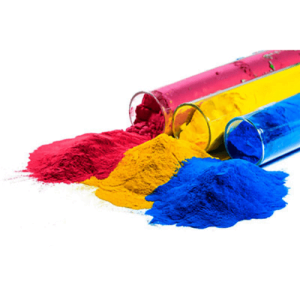-
Key Differences:
Solubility: The primary distinction between dyes and pigments lies in their solubility. Dyes are soluble and can be directly absorbed into the substrate, while pigments are insoluble and exist as dispersed particles.
Application Process: Dyes are applied to substrates through a dyeing process, where the material is immersed in a dye solution. Pigments, on the other hand, are applied by dispersing the pigment particles in a medium, such as a binder in paints or inks.
Color Fastness: Dyes generally exhibit good color fastness when bonded to the substrate, especially in textiles, but they may fade over time due to exposure to sunlight, washing, or other factors. Pigments, being more stable and resistant, maintain their color for extended periods.
Transparency vs. Opacity: Dyes tend to be transparent or semi-transparent, allowing light to pass through and interact with the substrate. Pigments, depending on their particle size and properties, can be opaque, reflecting and scattering light.
Range of Colors: Dyes offer a wider range of vibrant and intense colors compared to pigments. Pigments often provide a more limited color palette.


